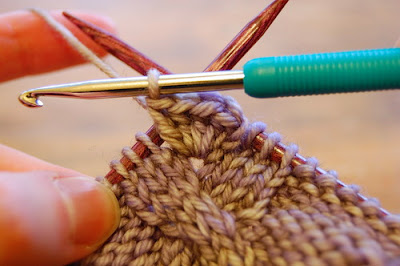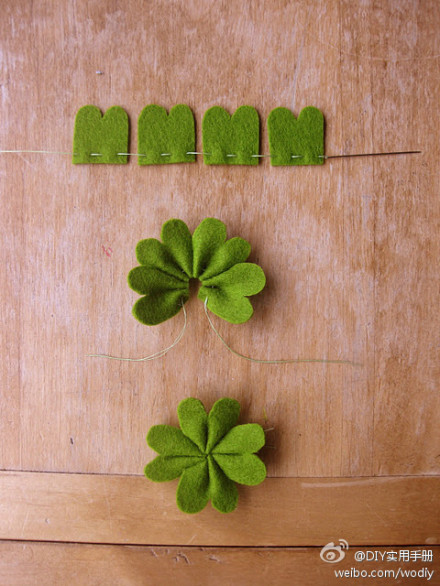Knitted bobbles are the biggest pain in the arse I’ve ever experienced in any craft. They’re time-consuming and awkward, and the thing is this:
Dude, you can crochet bobbles without pain. They’re simple. Simple and quick.
So I vowed to never knit another bobble but what I really did was avoid knitting projects that required bobbles. Dumb.
Until now. Right now I’m knitting a sweater for my niece-to-be. It’s an adorable A-line cabled cardigan, with bobbles. And I’m crocheting the bobbles. And I believe with the entirety of my being that you, too, should never again knit a bobble.
Here’s how to crochet bobbles in a knitting project:
(Note: There are a few types of bobbly things in crochet. What I’m showing you here, specifically, is how to use a crocheted popcorn in a knitting project. Popcorns stick out quite nicely, resulting in great bobble definition.)Step 1: Knit to the stitch you’re supposed to make a bobble in (the first stitch on the lefthand needle):
Step 2: Slip that stitch purlwise onto a crochet hook that’s slightly smaller than the needles you’re using.
Step 3: Chain 2.
Yes, you make the two chains using the knitted stitch as a base. Here’s what it looks like after you make the chains:
Step 4: Make 4 double crochets into the knit stitch. (I prefer to make them into the stitch below the knitted base stitch I slipped onto the crochet hook in Step 2. Just think it looks better.) (Depending on the weight of yarn you’re using and on your personal preference, make more or fewer double crochets here, for a more or less prominent bobble.)
Step 5: This is the popcorn part – slip the hook out of its loop, tugging it a little loose so it won’t start to unravel (as you can see below, I just hold the loop in my fingers), and insert the hook into the top two loops of the first double crochet stitch you made. (Yes, ignore the chains from Step 3.)
Step 6: Slip the loop back onto the hook and draw it through the double crochet stitch. (Correction: The photo below shows yarning over, then pulling the yarn through the loop and the stitch. This is wrong! My apologies. Don’t yarn over; just pull the stitch loop through the double crochet, then make 1 chain to finish the popcorn.)
Step 7: Slip the loop from the crochet hook onto the righthand knitting needle.
Step 8: Continue knitting according to your pattern. When you knit the next stitch, keep the bobble in front of the work so you can snug up your stitches and pop that bobble right out like the light, fluffy, mildly buttered and salted wonder that it is.
Posted by kpwerker on http://the-holocene.tumblr.com/post/44063552749/tutorial-how-to-crochet-bobbles-in-a-knitting


























